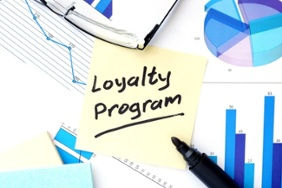Who Picks Up the Tab for Credit Card Rewards?
- mfindeisen6
- Nov 15, 2018
- 5 min read
Recently there was an article with this subject line in the Wall Street Journal. However, the author covered this subject in a simplistic and cursory manner. She didn’t really explore the numbers that drive this business, and she never really answered the question. Today, we are going to take a more in-depth look at it and come up with some answers.
First, we should recognize that rewards are important for people who do use credit cards — about three-quarters of the population. In fact, about a third of them say that when choosing a card, rewards are their most important consideration. While most people think of airline miles, there are two other reward types: points and cash-back.
Second, this is a big revenue source for bankcard issuers and also for airlines. In fact, if you look at the revenue components for the major airlines, you will see that about 60% of their revenue comes from ticket sales to consumers and 40% comes from selling frequent flyer miles. This is pretty amazing given the size of the domestic air market — over 700 million trips last year, representing two trips for every man, woman and child in the country!
Credit Card Rewards at Banks

As for banks, well, let’s look at the numbers. First, we must distinguish between card issuing banks and card acquiring banks. When a merchant takes a credit card for payment, they typically pay a fee to the “acquirer,” the bank and processor who handles the authorization and settlement of the transaction, typically about two percent of the payment amount. Most of this, probably about 1.65 – 1.75%, goes to the bank that issued the card to the consumer. This is called “interchange.” These fees are defined by the card brands, Visa and Mastercard. Both Discover and American Express issue their cards directly to the consumer, so they are not paying fees to other banks when their cards are used.
The card brands have dozens and dozens of interchange fees, based on the type of card, the type and size of the merchant, and the type of transaction. This is such a complicated subject that some acquirers sell what they call “bundled pricing” to their merchants, with a qualifying rate, mid-qualifying rate and non-qualifying rate, which just makes things even more confusing for everybody except the processor, who makes more money with this practice.
There are over 5,000 commercial banks in the country, but it turns out that there are only four major bank issuers. A study by First Annapolis Consulting shows that for the first quarter of 2017, purchase volume for these issuers was as follows (with After-Tax Return on Assets attached):
Bank Purchase Volume 1Q-2017 After-Tax ROA 1Q-2017
Chase $139.7 billion Not Calculated
Citigroup $89.4 billion 2.08%
Capital One $67 billion 1.20%
Bank of America $55.3 billion Not calculated
US Bank $21 billion 2.60%
(Wells Fargo was a distant sixth, with $17.9 billion in purchase volume).
The weighted average for all issuers, including retail card issuers Snychrony, Citi Retail Services and Alliance Data, was 2.15%. Just to put things in perspective, an acceptable ROA for a commercial bank loan portfolio would be around one percent. Not to put too fine a point here, but this means that the card issuing business is roughly twice as profitable for a bank as making loans!
The Wall Street Journal article was ambivalent on whether consumers pay more to support this rewards structure, although it recognized that something must be going on because “there is no free lunch.”
Answering the Original Question
Let’s not beat around the bush on this subject. It is the merchants who pay the freight for the payment system.Two thirds of the Gross National Product is driven by consumer spending at these merchants. A large part of this spending is just in three areas: vehicle purchase and maintenance, fuel and groceries. Of course the merchants pass on these fees to the consumer, duh!

A 2014 study by the Federal Reserve Bank of Kansas City showed that the average US merchant pays an acquiring fee of 1.73%. A Visa Premium (Rewards) card in grocery would charge 2.2% and a non-premium card would charge 1.25% (which right away shows the huge difference inherent in paying with a rewards card). At a fuel station, Visa premium and non-premium are both 1.2%, which means that the petroleum people were a lot better at negotiating than the grocery merchants.
While I generally don’t get into sociological issues in this blog, it is interesting to note that in 2010 the Boston Fed did study on who benefits from rewards cards. They found that the poorest households, defined as those making less than $20,000 a year, paid an extra $23 a year for the cost of supporting a rewards infrastructure, and the wealthiest families (over $150,000 in income) got a net benefit of $756 a year!
We can conclude from this that:
There is a cost to support the rewards infrastructure.The merchant pays the cost.Wealthy people and business travelers get more monetary value out of the rewards system than they pay in fees themselves.Successful merchants have a good cost control system and know what prices they have to sell their goods at in order to achieve a profitable margin.

When you get into very high volume businesses, such as petroleum and grocery, this is obvious. In fact, the margin for the grocery industry is only one percent, so you can be sure they are well aware that they are paying over a percent to settle a card transaction.
The third big component, car dealers, is very interesting: a car dealer will generally not let you use a credit card when you buy a car. The average new car is $34,000 and a 2% fee would be $680, which is about half of the dealer’s net margin on the sale! The dealer would have to be nuts to take a rewards card here.
Many Merchants Prefer Checks
Now that you understand interchange and the numbers associated with it, perhaps you will see why certain merchants prefer to use the CrossCheck product – a payment directly from the checking account.
Car dealers and the auto aftermarket, one of our core businesses, will always prefer to take a check instead of a rewards card for a down payment, full purchase or multiple payments to be made in the future. Of course, they want the peace of mind that comes from never having to worry about whether these future payments will bounce, which is why they prefer to take the CrossCheck payment guarantee.
Not only does this work well for the merchant, it is vastly preferred by the consumer, who does not have to apply for credit or pay interest, or get into a new “debt trap” that they can never escape from, hard as they try. CrossCheck is consumer friendly and is a “reward program” for the merchant, as opposed to the program from the card brands. That’s why thousands of car dealers prefer CrossCheck’s Multiple Check program over a rewards card.
Comments